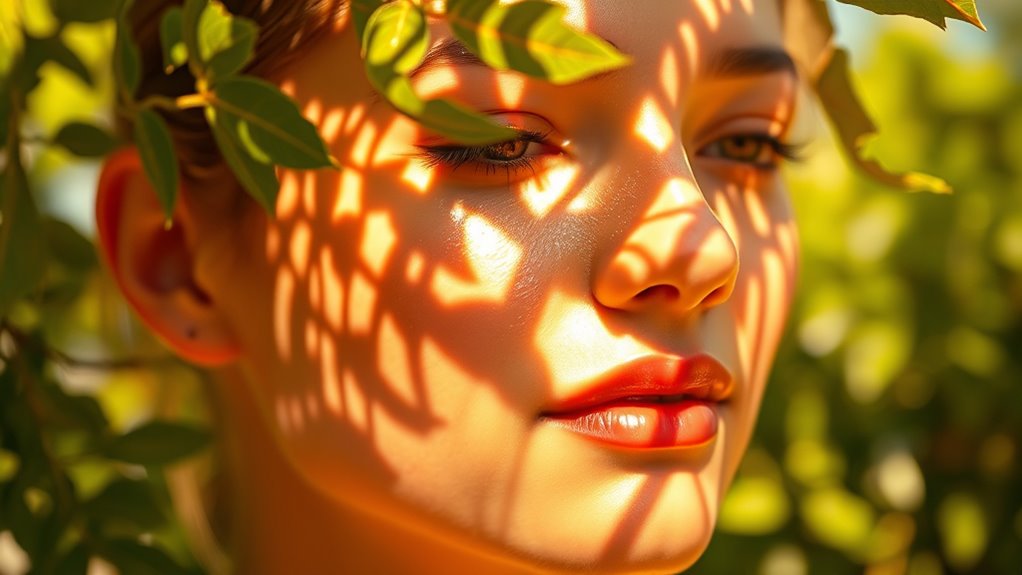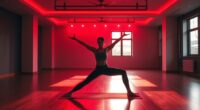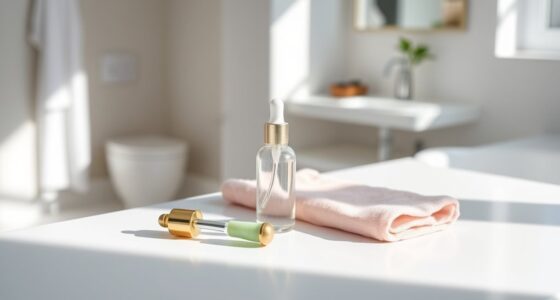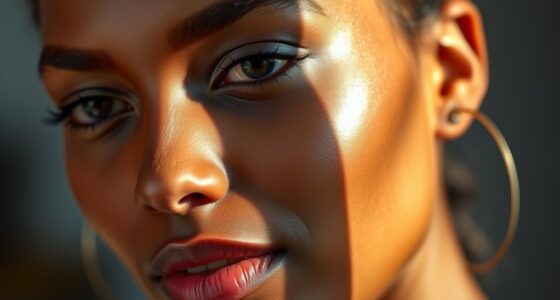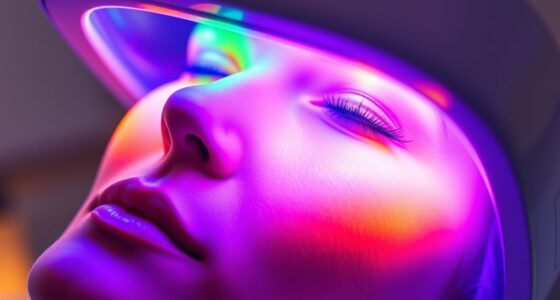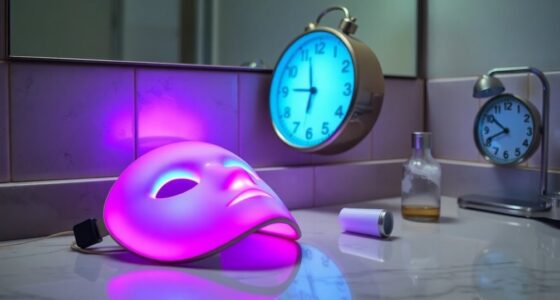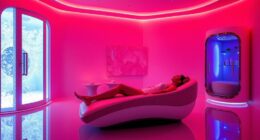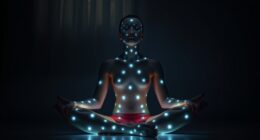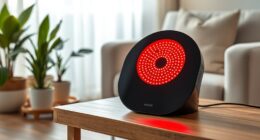You can enjoy outdoor sun exposure to boost your mood and vitamin D levels without immediately needing sunscreen, especially during early morning or late afternoon when UV rays are less intense. Short, regular exposures of 10-15 minutes are enough for vitamin D production. Applying sunscreen right after initial sun contact can protect your skin while still allowing vitamin D synthesis. To learn how to balance sun safety and benefits effectively, keep exploring this topic further.
Key Takeaways
- Short, regular sun exposure can support vitamin D production even when using light therapy.
- Sunscreen can be applied after initial brief exposure to prevent skin damage during longer outdoor activities.
- During light therapy, sunscreen is generally unnecessary since exposure is controlled and artificial.
- To balance benefits, get brief sun exposure early or late in the day, then use sunscreen if staying outdoors longer.
- Combining light therapy with sun safety measures ensures skin protection while maintaining vitamin D levels.

Light therapy and sun exposure play pivotal roles in regulating your body’s internal clock and boosting your mood. When you spend time outdoors, your skin absorbs ultraviolet B (UVB) rays, which are essential for vitamin D synthesis. This process helps your body produce the vitamin that supports bone health, immune function, and overall well-being. However, while sunlight offers these benefits, it also exposes your skin to ultraviolet radiation, which can accelerate skin aging and increase your risk of skin cancer. That’s why understanding when and how to protect your skin is vital, even if you’re seeking the health benefits of sunlight.
Vitamin D synthesis is one of the most important reasons to get some sun exposure, but it’s a delicate balance. Short, regular periods of sun exposure—around 10 to 15 minutes a day—are often enough for your body to produce adequate vitamin D, especially if you have lighter skin. During this time, your skin produces vitamin D efficiently without overexposing yourself to harmful rays. However, prolonged exposure, especially during peak sunlight hours, can lead to skin damage over time. The ultraviolet rays damage collagen and elastin fibers, which speeds up skin aging, causing wrinkles, fine lines, and age spots. Over the years, this cumulative damage can greatly alter your skin’s appearance and elasticity.
While sunlight is beneficial, it’s not an excuse to skip sunscreen altogether. Even if you’re aiming for vitamin D synthesis, using a broad-spectrum sunscreen with at least SPF 30 can help block the harmful UV rays that contribute to skin aging and increase cancer risk. You can still get some vitamin D from brief sun exposure before applying sunscreen or during times when sun intensity is lower, such as early morning or late afternoon. It’s also helpful to wear protective clothing, hats, and sunglasses to shield your skin and eyes from UV damage while enjoying outdoor activities.
Frequently Asked Questions
Can Light Therapy Replace the Need for Sunscreen Outdoors?
No, light therapy can’t replace the need for sunscreen outdoors. While light therapy helps with mood and skin issues, it doesn’t provide UV protection, which is vital for preventing skin aging and reducing skin cancer risk. When you’re outside, always wear broad-spectrum sunscreen, even if you’ve had light therapy. Protecting your skin from UV rays is essential to keep it healthy and youthful over time.
Is It Safe to Combine Light Therapy With Sun Exposure?
Yes, it’s safe to combine light therapy with sun exposure if you prioritize UV safety. You should still wear sunscreen to protect your skin from harmful UV rays, which can cause skin aging and increase cancer risk. Light therapy offers targeted benefits, but outdoor sun exposure requires caution. Always use broad-spectrum sunscreen, seek shade, and limit exposure to maintain skin health while enjoying the outdoors.
How Does Natural Sunlight Compare to Light Therapy Devices?
Natural sunlight offers a broader UV spectrum compared to light therapy devices, which typically focus on specific wavelengths. While sunlight can boost mood and vitamin D, it also accelerates skin aging and increases skin cancer risk. Light therapy devices provide targeted, controlled exposure, reducing these risks. If you’re concerned about skin aging, use light therapy for benefits without the harmful UV exposure, but always wear sunscreen when outdoors.
Are There Risks of Skin Damage From Excessive Sun Exposure?
Exposing yourself to too much sun can be like flirting with trouble—you risk UV damage and tanning risks that might not be worth it. Overdoing it can accelerate skin aging and increase your chances of skin cancer. To enjoy sunshine safely, always wear sunscreen, seek shade, and limit your sun time. Protecting your skin now keeps it healthier and more radiant in the long run.
Does UV Exposure From Sunlight Affect Light Therapy Benefits?
UV exposure from sunlight can impact light therapy benefits by potentially reducing their effectiveness or causing skin damage. UV effects may interfere with your skin’s response to therapy, especially if you’re exposed to strong sunlight during treatment. Sunlight impact varies based on the intensity and duration of exposure. To maximize benefits and protect your skin, it’s best to limit direct sunlight during light therapy sessions and always wear sunscreen when outdoors.
Conclusion
While light therapy offers benefits without the risks of UV damage, sun exposure still exposes you to harmful rays. You get a natural boost of vitamin D, but without protection, you’re risking premature aging and skin cancer. Think of it this way: enjoying sunlight without sunscreen is like walking a tightrope—beautiful but dangerous. To truly benefit from the sun’s warmth and avoid its pitfalls, protect your skin. Balance is key—embrace sun safety even on sunny days.
